Tiantan - Temple of Heaven Park
South of the Forbidden City and Tian'anmen Square is the Temple of Heaven Park. Our guide Dina points out what we're about to see inside, holding our tickets in her hand. The umbrella wasn't for rain, it was both for the sun, and to help us find her in a crowd.
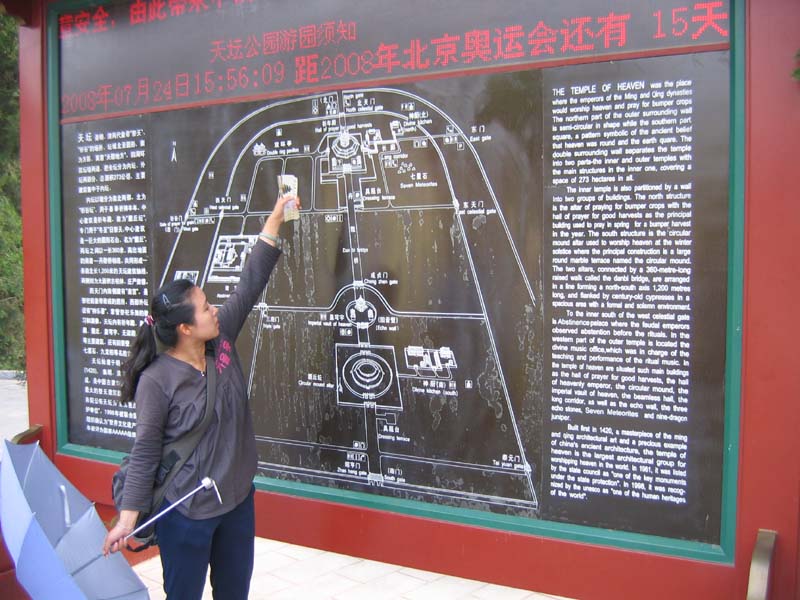
There is an admission fee for the park, but until it was made public in 1949, it was completly off-limits to the public. The park covers 273 hectares. I did the conversion, and that's 675 acres.
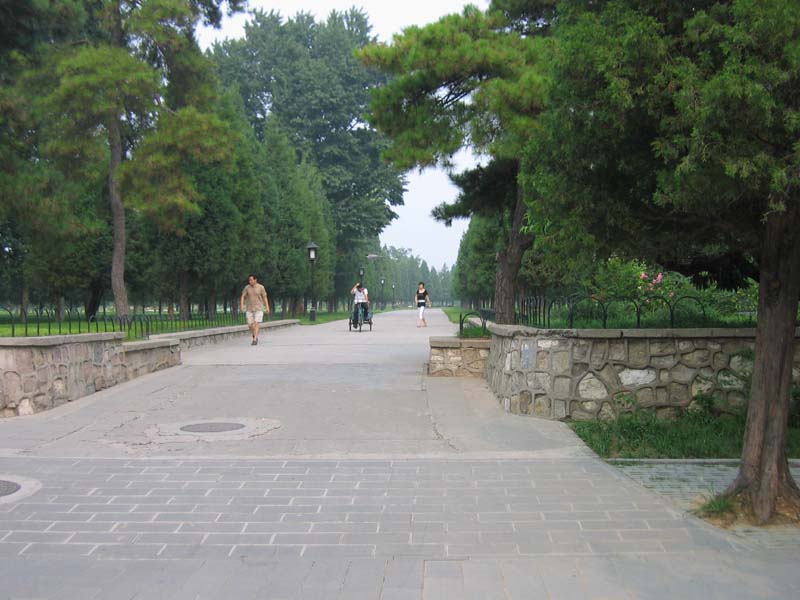
That's a large flat screen TV up ahead, which this afternoon was showing a soccer (football to the rest of the world) match.
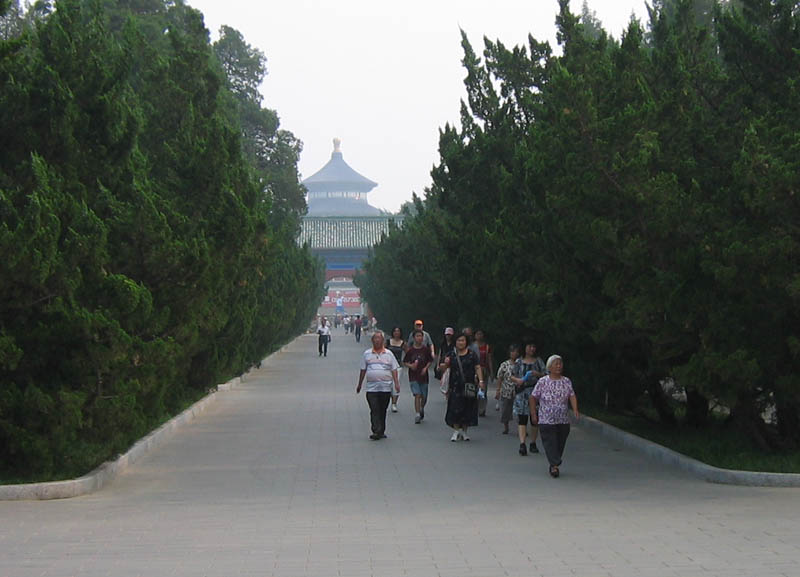
The locals can pay an annual fee to enter the park, and they come to meditate, do tai chi, practice ballroom dancing, etc. Lots of open spaces here. And they like to play music, mostly traditional, but there are exceptions.
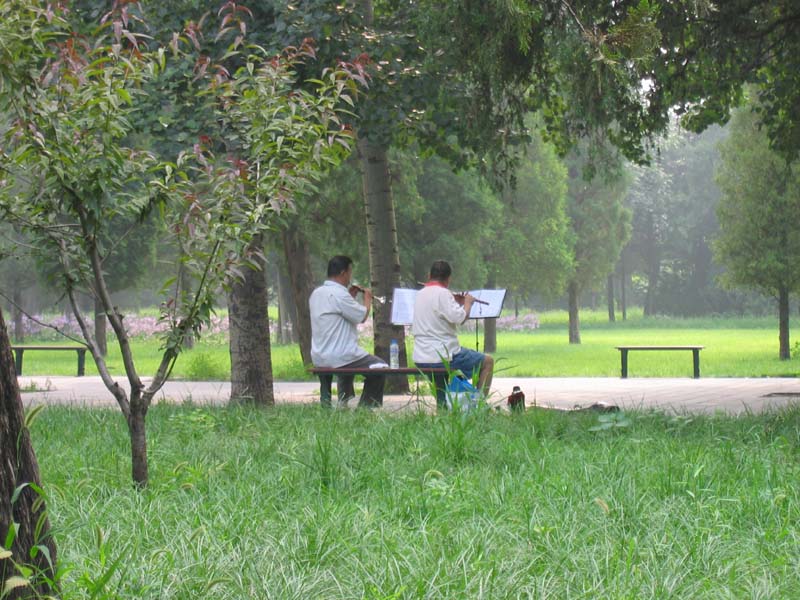
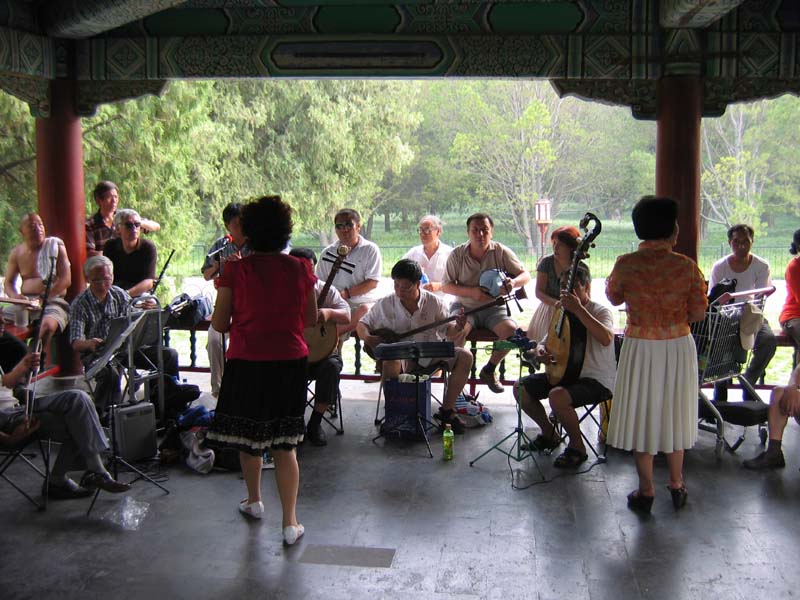
The guy below was playing 'O Solo Mio' on his accordian.
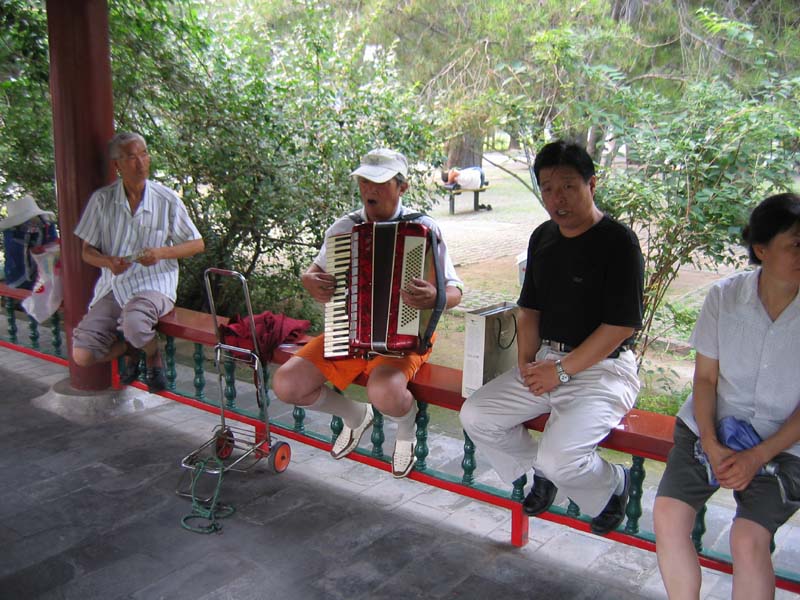
This is the Hall of Prayer for Good Harvests, used in Spring to pray for good harvests in the Fall. Construction of the original was started in 1420 during the Ming dynasty. This building is actually a replica which went up in 1890, after the original was struck by lightning and burned to the ground. It's 125 feet high at its peak, and the 28 pillars and various brackets support the roof without a single nail.
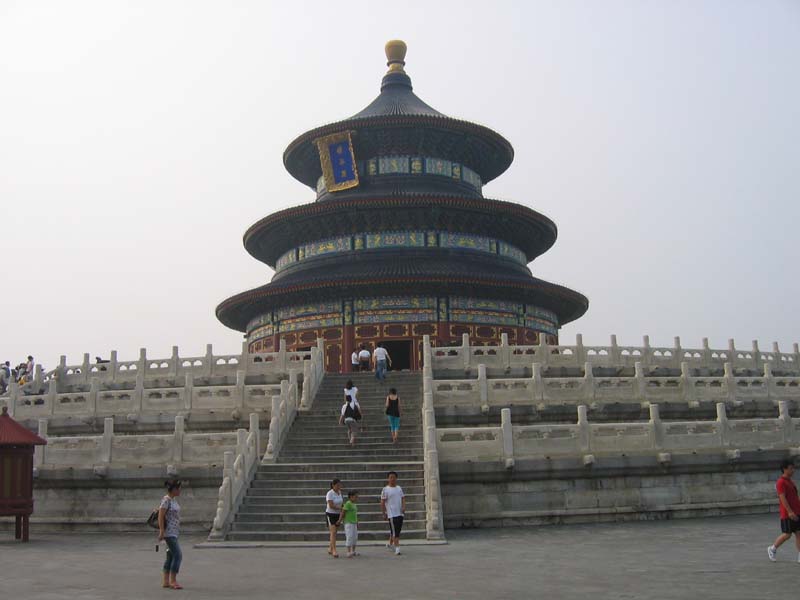
You can climb the steps
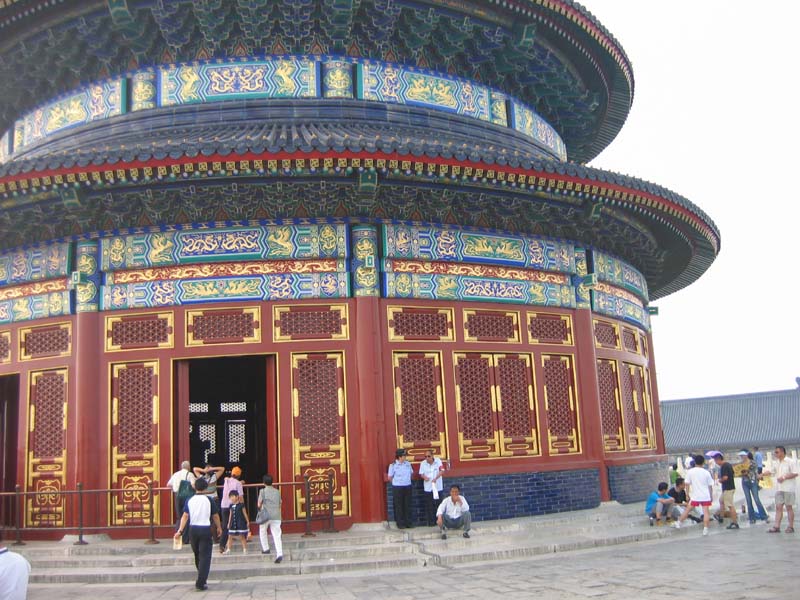
but you can only look inside. You can't go in.
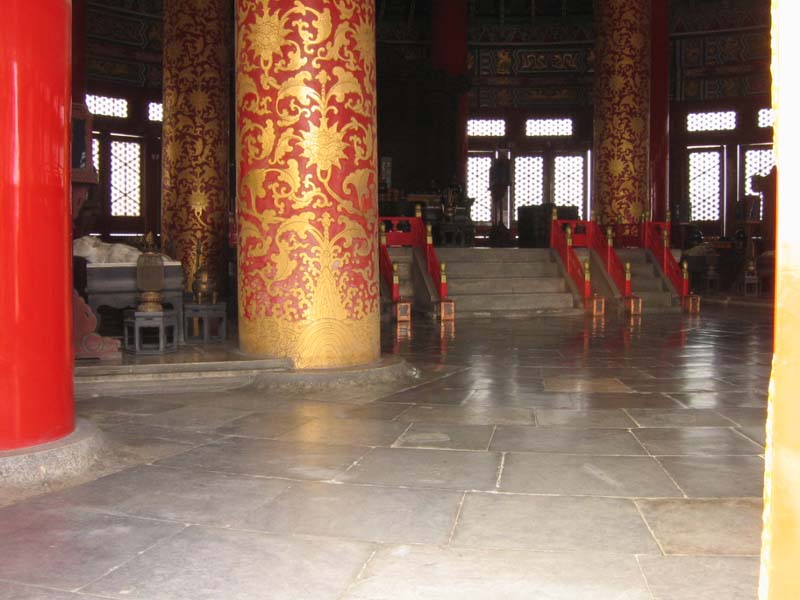
On the other side, looking back. Note the large carving which runs up the center of the stairs on this side.
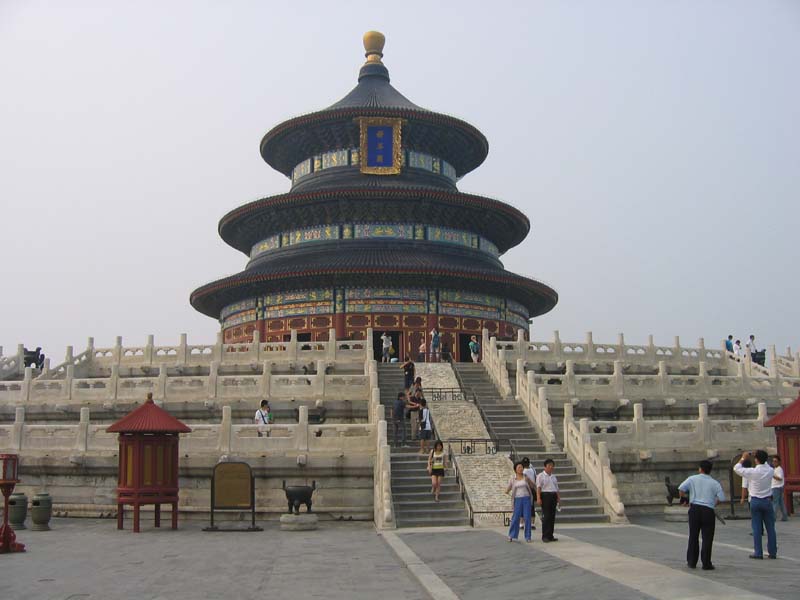
Nearby the Hall is this giant round glazed brick stove, which was used for sacrifices. A shaved calf would be burned here over pine twigs & reeds in order to welcome the God of Heaven, a ritual called, not surprisingly, 'Giving a Warm Welcome to the Imperial God by Burning Firewood'. After the ceremony, ceremonial placards and silk scrolls were respectfully placed into the stove and burned, while the emperor stood by watching it. They called this 'Watching the Burning'.
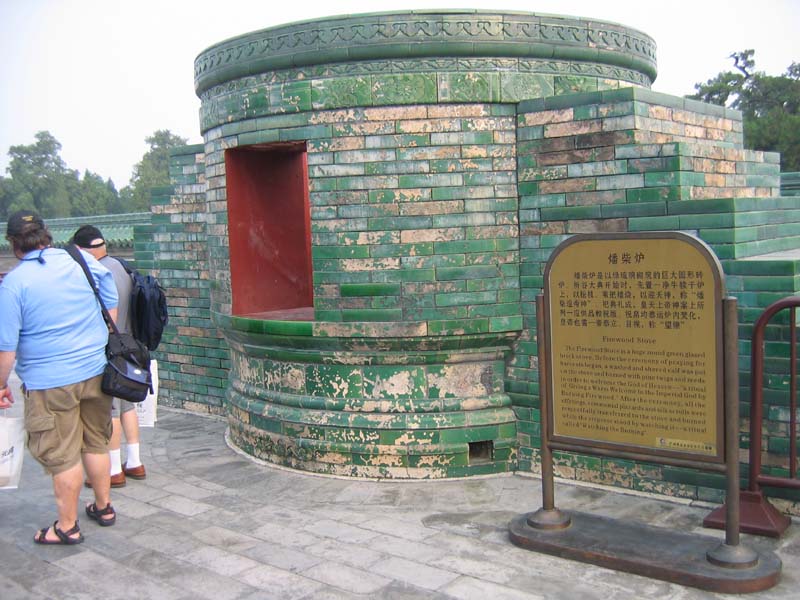
There are also some smaller stoves, still pretty big, nearby.
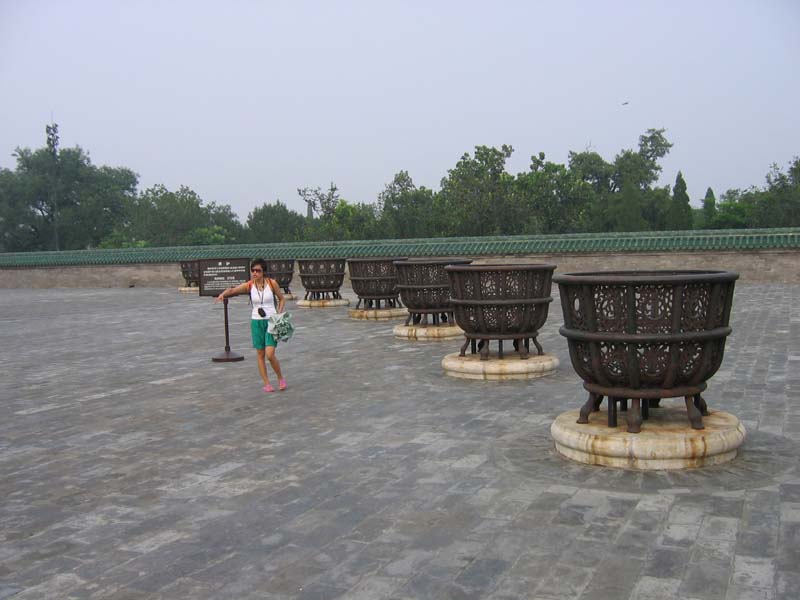
Gates like this are familiar sites. This one is called the Cheng zhen gate. The center door of these gates was usually used only by the emperor; the ones on the side by officials. Those are incense burners on either side of the walk leading up to the gate.
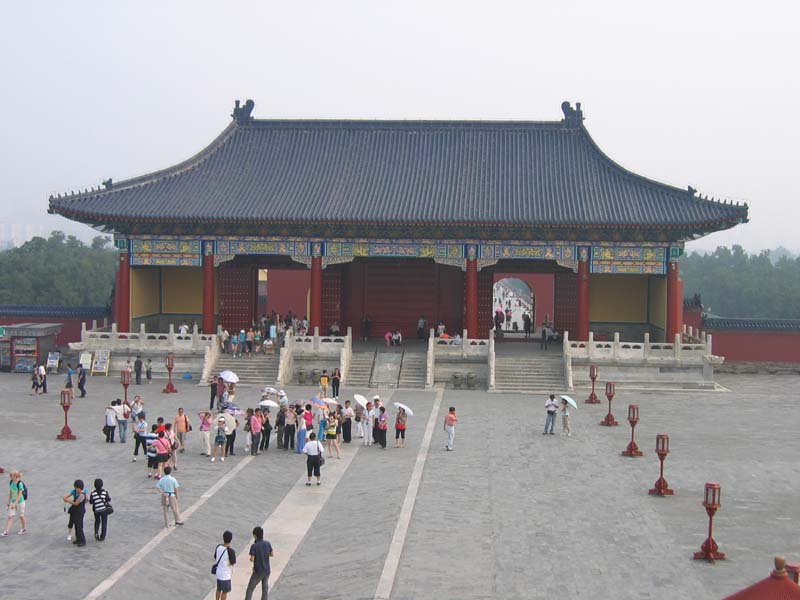
On the other side is a 360 meter-long raised walk, called the Danbi Bridge, which leads to the Imperial Vault of Heaven. The park spreads out on both sides below the walk.
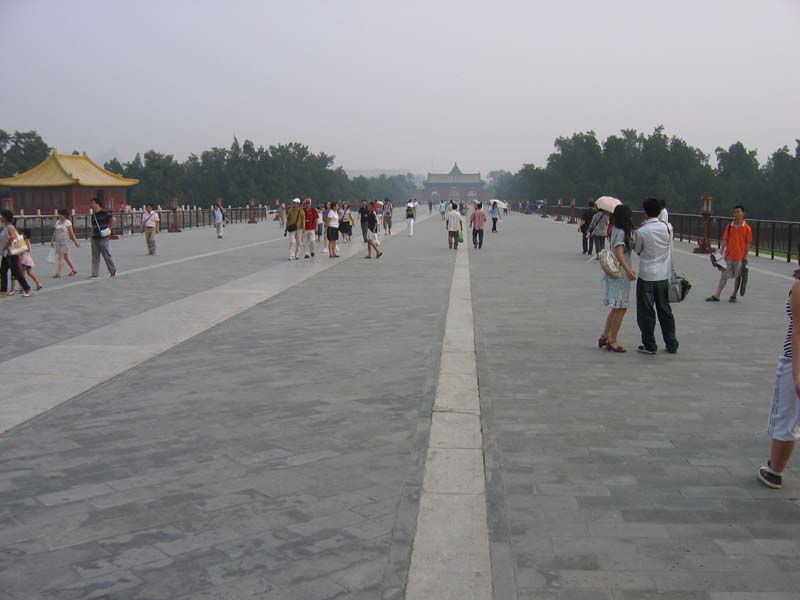
Surrounded by a circular wall, this is the Imperial Vault of Heaven, kind of a smaller version of the older Hall of Prayer for Good Harvests. It was built in 1530, and first called the Hall for Appeasing Gods. The name was changed 8 years later. About 60 feet high by 47 feet in diameter, it's wood, with a blue-tiled roof.
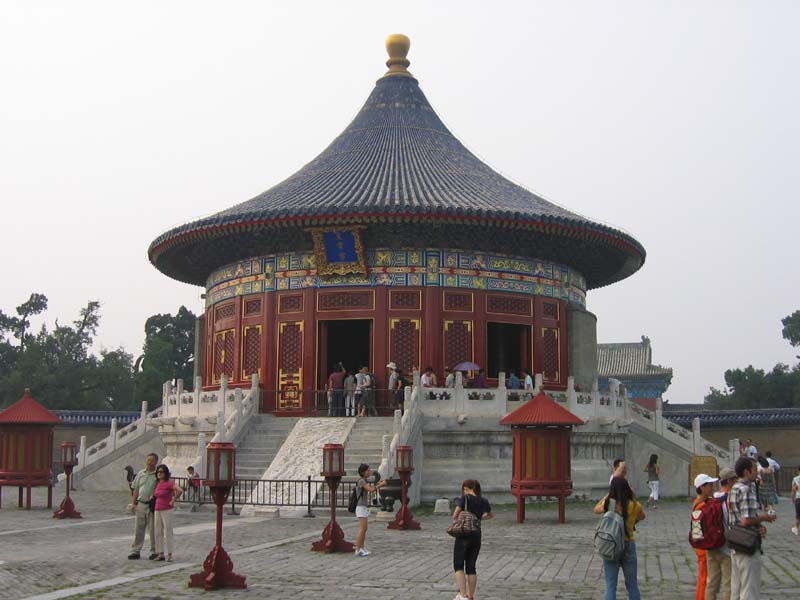
On the ceiling of the Vault is a design of a coiling gilded dragon playing with a pearl.
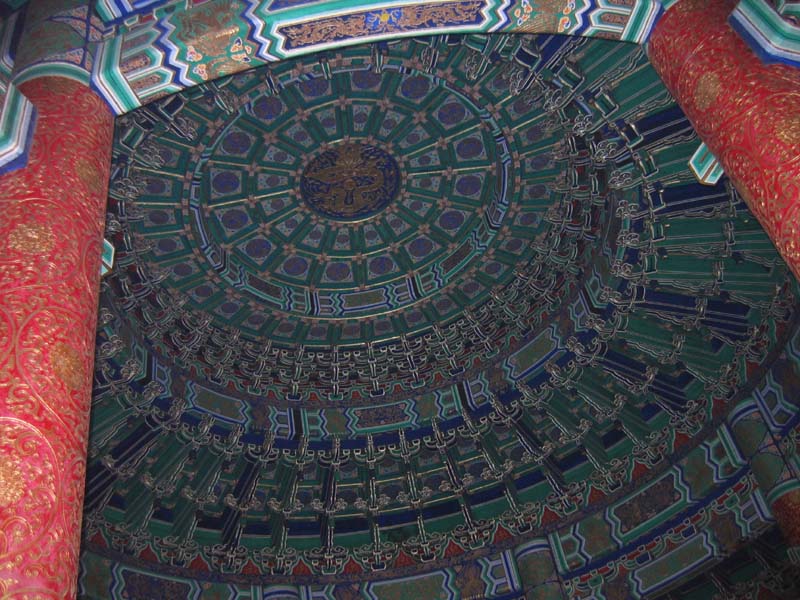
Here's another stone carving on the steps of the Vault.
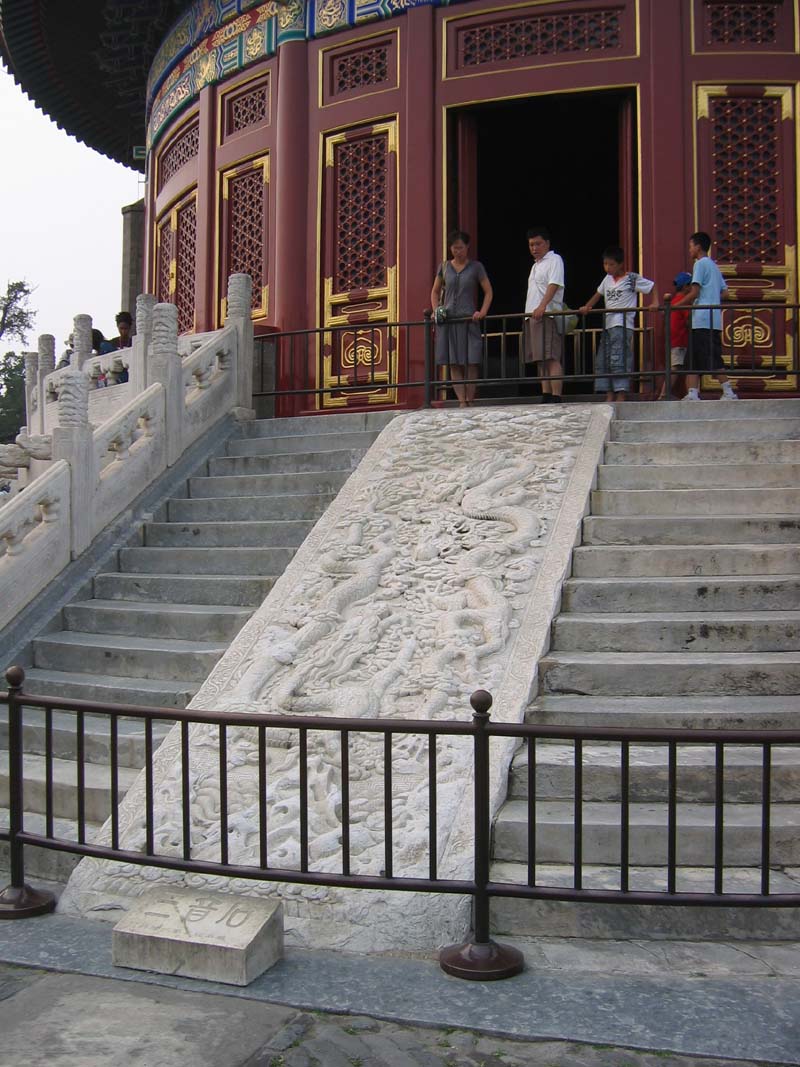
This is one of the buildings within the circular wall, the east annex hall. Also built in 1530, it has a pitched roof of sky-blue glazed tile. According to the marker out front, it was used 'to house the divine tablets of such gods as the Great Brightness (the sun), the Polar Stars, Venus, Jupiter, Mercury, Mars, Saturn and other celestial stars'. I'm not sure what that means, but now you know as much as I do.
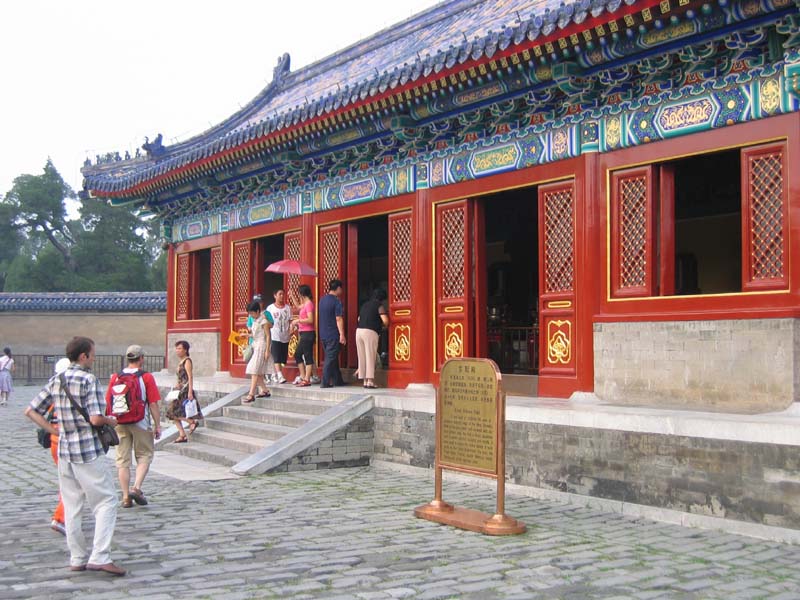
Outside of the circular wall, these are the arches you must pass through to proceed towards the circular mound altar, seen in the background.
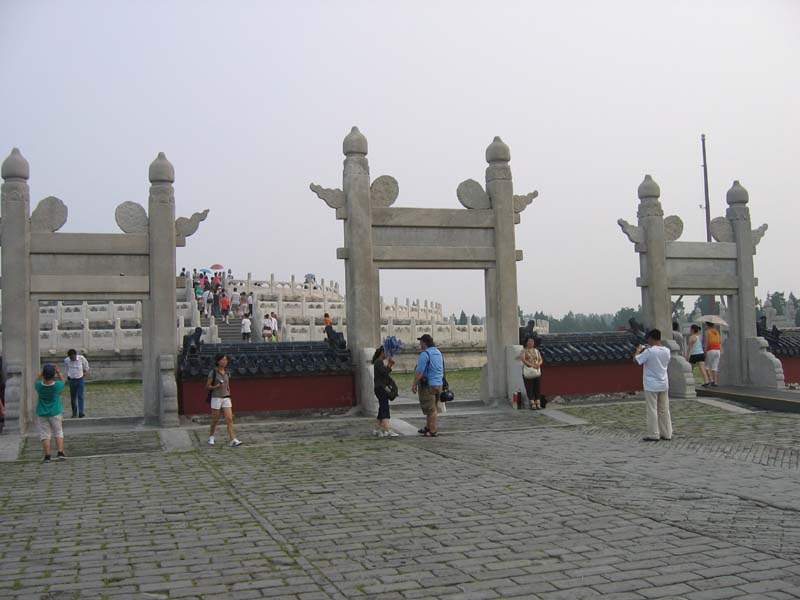
This is where the emperor came to pray for good weather. At the top and center of the circular three-tiered green & white marble alter is a circular stone. Here was thought to be the most sacred spot in the Chinese empire. Today it's a popular spot to take a photograph. There are 9 concentric rings of stone slabs surrounding the center, the one closest the center having 9 stones, the next ring 18, the next 27, and so on, until the ninth ring, which has 81 stones. The number 9 was believed to be the numerical epitome of yang, the positive force, and signified Heaven.
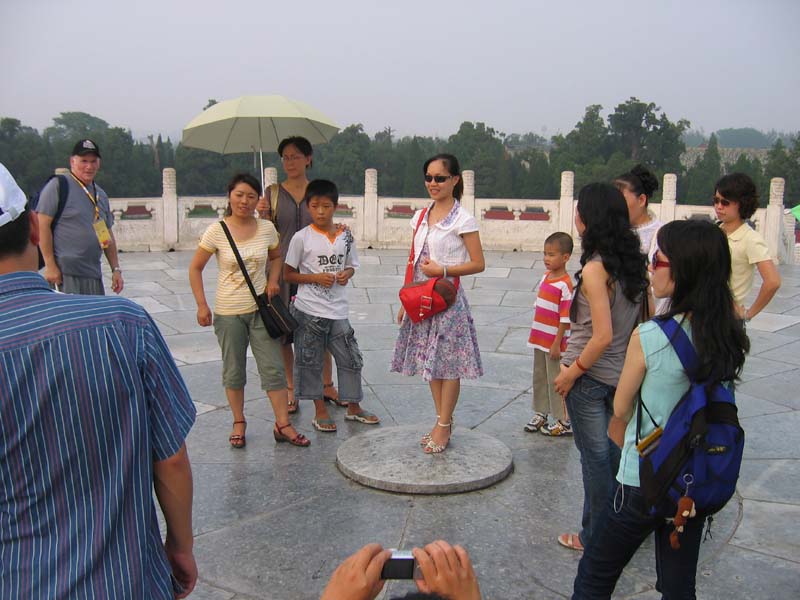
A few more arches and gates, and we'll leave the Temple of Heaven Park through the distant southern gate.
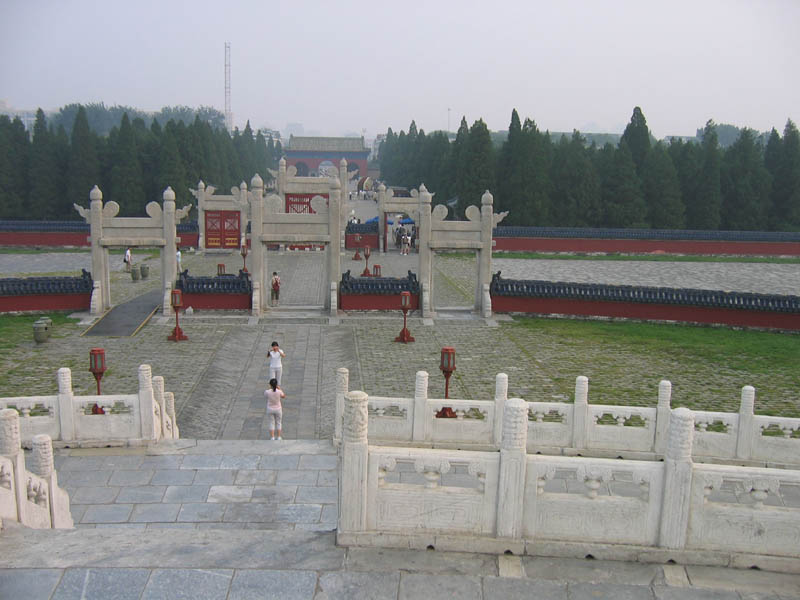
Back to Jeff's Beijing homepage
©2002-2008 Jeff Baker.us All Rights Reserved.